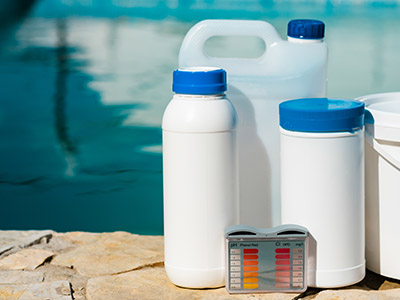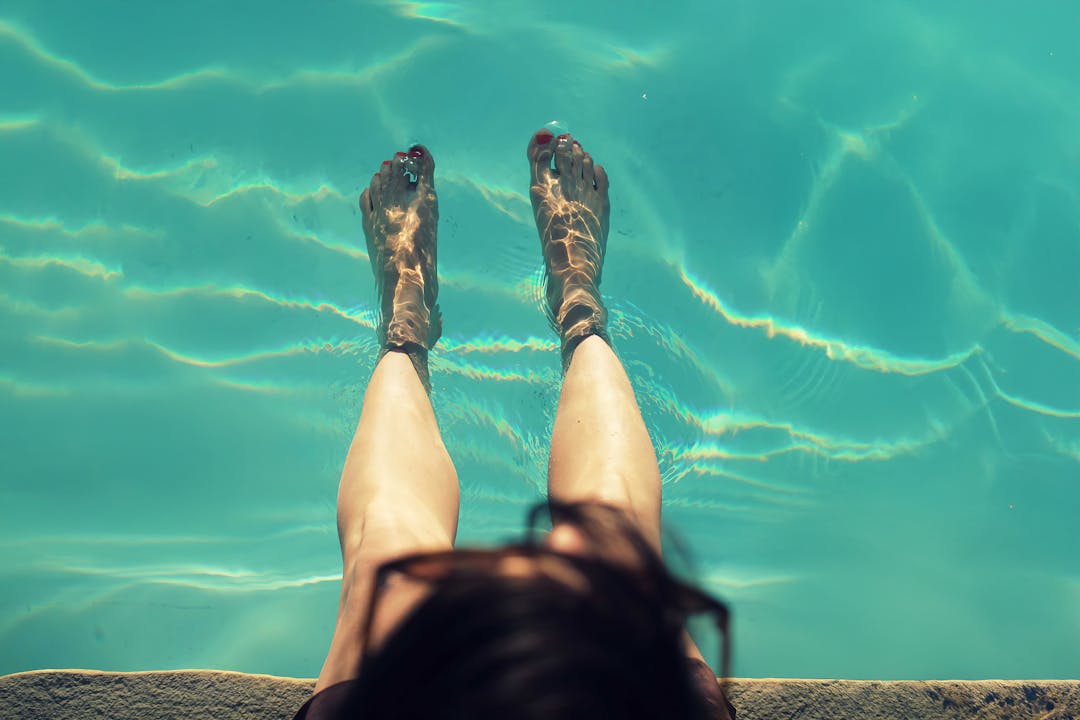What Is Pool Algaecide?
For many pool owners, algae is an ongoing problem, appearing during warm, sunny weather, when a relaxing swim is at the top of the to-do list. But you can stop an algae bloom in its tracks with the help of a trusty pool algaecide. Join us as we discuss how pool algaecide works and how to use it to prevent and eliminate growth from your swimming pool.
What is pool algaecide?
Pool algaecide is a specialized chemical solution that can kill the microorganisms that cause cloudy and green pool water.
How does pool algaecide work?
By interfering with photosynthesis, breaking down cell walls, and poisoning algae cells with copper ions, pool algaecides disrupt cellular processes to either destroy them directly or make them more vulnerable to chlorine.
When do you need to add pool algaecide?
Pool algaecide can be used as a preventive or corrective measure. Many people apply it at the beginning of the season or after heavy rains to inhibit algae growth.
When these microorganisms appear in your pool, you can use algaecide after adding a shock treatment and scrubbing all surfaces to kill algae and prevent regrowth.
How do you use pool algaecide?
Follow these steps to eradicate algae from your pool using algaecide:
- Brush and vacuum pool surfaces
- Add shock
- Balance water chemistry
- Add algaecide
- Run the pump for up to 24 hours
- Avoid swimming until water is clean and clear
Related: How To Get Rid of Algae in Your Pool
What are the benefits of pool algaecide?
You already know that algaecide eliminates algae, but what does that mean for your overall enjoyment and maintenance practices? Let’s discuss a few notable benefits of these chemicals.

Maintain clear water
Algae can cause your pool to become yellow, green, or even black with substantial overgrowth. Using algaecide as part of your regular pool maintenance can help you keep your pool water crystal-clear and visually inviting.
Prevent and control algae growth
Different types of pool algaecides target different species of algae, but one constant remains true: consistent applications are key to prevention. When used regularly and strategically, this practice can inhibit growth and slash the time wasted restoring water quality after an algae bloom.
Reduce chlorine consumption
While chlorine can kill algae, it requires more concentrated amounts than a dedicated algaecide. Once these microorganisms begin to multiply, chlorine demand spikes, and your hands-on maintenance time increases.
You may need more than an extra splash of shock to see an effect. For optimal results, use a high-quality algaecide alongside chlorine to reduce waste and your workload.
Related: 5 Reasons To Leave Pool Equipment Repair to the Professionals
Types of algaecide for your pool
You’ll find three primary types of algaecides created specifically for use in swimming pools. Here’s a breakdown of each one to help you choose the best solution for your spa space:
Copper-based pool algaecide
Best for stubborn algae and pools prone to recurring blooms.
This type of algaecide contains copper ions that interfere with the cellular functions of algae to kill off these microorganisms. It’s highly effective against black and mustard algae and has a positive, long-lasting impact on water quality.
The drawback of copper-based products is that they require accurate dosage and precise pH levels to avoid stained pool surfaces and green hair. By volume, these are the most concentrated, requiring roughly 4 to 8 fluid ounces per 10,000 gallons of water for initial treatments.
Quaternary ammonium compounds
Best for routine pool maintenance and budget-friendly algae cleaning.
Quaternary ammonium compounds, or quats, are surfactant-based algaecides that act like soap, breaking down cellular structures to inhibit algae growth. These solutions are affordable, widely available, and effective against the green algae found in many swimming pools.
However, they break down quickly in sunlight, so using them during the day may not help. They may also be prone to foaming, especially in pools with waterfalls or spa jets.
Polymeric quaternary ammonium compounds
Best for pools with water features and swimmers with sensitive skin.
Also known as polyquats, these chemicals are tough on algae and easy on pool surfaces. Gentle and non-foaming, they’re a great option for pools with active water features. They consist of longer chemical chains that bind securely to algae and last longer in the water.
This type of pool algaecide will cost more than regular quats. However, it may not be as effective against chemical-resistant algae as copper-based solutions.
Shop GPS Pools for high-quality pool chemicals and products!
GPS Pools is your local source for swimming pool supplies, accessories, and expert advice. We offer comprehensive design services, professional installation, ongoing maintenance, and much more to help you make the most of your pool and take the guesswork out of pool care.
Browse our wide selection of services, shop our collection of gear, or start designing the luxury spa you’ve always dreamed of. Still have questions? Reach out today to chat with one of our team members!

